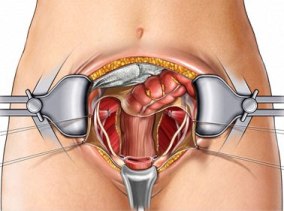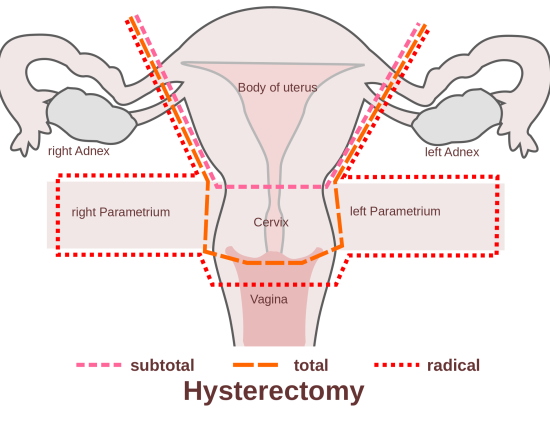Hysterectomy is a surgical method of removing your uterus (womb), a place where a baby grows when you are a pregnant.
Generally, this surgery is performed for a variety of reasons:
- when you have chronic pelvic pain
- uterine fibroids
- Endometriosis
- uterine cancer or heavy
- irregular periods.
Actually, in the human body, the uterus is the major female reproductive organ with its one end, the cervix, opens into the vagina and the other end is connected to both sides of the fallopian tubes.
Just below the division point of each fallopian tube is an ovary. The ovaries are a pair of glands, which produce eggs and the sex hormones.
Hysterectomy Surgical Methods:
On the other hand, presently hysterectomy can be performed in three ways: an abdominal incision (abdominal hysterectomy), a vaginal incision (vaginal hysterectomy), or through laparoscopic incisions (laparoscopic hysterectomy).
Abdominal hysterectomy:
In this, the surgeon makes an incision through skin and connective tissue in your lower abdomen in order to reach your uterus. Generally, this surgical method has the most uncomfortable recovery because the long abdominal incision takes more time to heal.
This surgical method is used when you have severe endometriosis, extensive scar tissue (adhesions), or cancer.
Vaginal hysterectomy:
In this, the surgeon approaches your uterus by making a circular vaginal incision around the cervix. This surgical method is an option when uterus can be removed easily.
Laparoscopically Assisted Vaginal Hysterectomy (LAVH):
This surgical method is done through the vagina as well as through some small abdominal incisions.
Laparoscope, a lighted viewing instrument and some surgical instruments are introduced into your body through small abdominal incisions. First, the uterus can be separated from scar tissue through the abdominal incision and then it is removed through the vagina.
Laparoscopic Supra-cervical Hysterectomy (LSH):
Actually, this surgical method is done with the insertion of a laparoscope and surgical instruments through several small abdominal incisions. This is a partial hysterectomy type, where the uterus is removed in small pieces, and the cervix is left in place.
Leaving the cervix in place helps support several internal organs that otherwise will drop lower into the pelvis. This surgery takes a much shorter recovery time.
Moreover, the type of surgical method you are having is completely based upon the medical cause for the surgical procedure, your health condition and also on the size and position of your uterus.
During this surgical procedure, some of your reproductive organs will be removed depending upon your condition. A hysterectomy can be either one of these three types:
Partial (subtotal): Removes the upper part of the uterus but leaves the cervix in place. This type is an easier operation but it requires you to continue with the Pap tests to screen for cervical cancer.
Total: This is the most common type of hysterectomy where it removes the cervix as well as the uterus.
Radical: Also called bilateral salpingo-oophorectomy. It removes the uterus, cervix, ovaries and fallopian tubes. This triggers menopause if you haven’t reached menopause.






